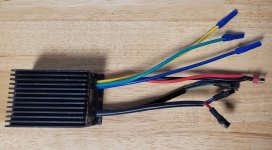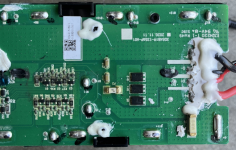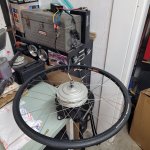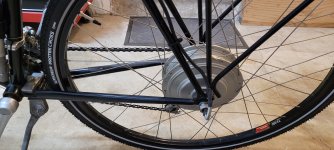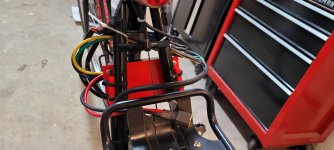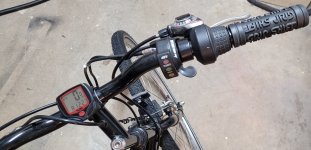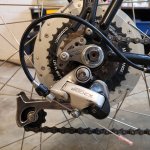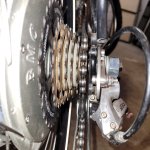Hi all, I--like many of you, I'm sure--decided to add another new project to the queue. Though I have some electric motorcycle experience (I installed lithium modules into my Vectrix VX-1), this will be my first ebike build. The plan is to electrify a steel Trek hybrid. So far, I have collected the following parts:
 Unfortunately, after torching off the JB Weld, the clutch still won't spin freely in either direction. I understand that MAC clutches are compatible, but I'm having trouble finding a cheap, used one.
Unfortunately, after torching off the JB Weld, the clutch still won't spin freely in either direction. I understand that MAC clutches are compatible, but I'm having trouble finding a cheap, used one.
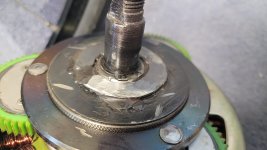

Another unfortunate thing about this project (or any using older parts) is that a lot of information is no longer accessible. Lots of relevant old ES posts point to the now-defunct http://www.ebikesf.com/ website, and lots of the pictures are missing even when using the Wayback Machine on archive.org.
Any chance someone has the BMC throttle pinout or any information about the brake cutoff switch for the controller? Any other documentation for the motor throttle controller would also be a huge help!
- BMC Model 14110-2 (V2) 48V 600W rear hub motor with 700C wheel (used)
- BMC 48251111 25A motor controller
- BMC-compatible 48V thumb throttle
- 48V 15AH battery packs from this thread
- 54.6V OHRIJA smart charger (output reduced from 5A to 4A for use with the batteries above)
- Miscellaneous JST and bullet connectors


Another unfortunate thing about this project (or any using older parts) is that a lot of information is no longer accessible. Lots of relevant old ES posts point to the now-defunct http://www.ebikesf.com/ website, and lots of the pictures are missing even when using the Wayback Machine on archive.org.
Any chance someone has the BMC throttle pinout or any information about the brake cutoff switch for the controller? Any other documentation for the motor throttle controller would also be a huge help!


